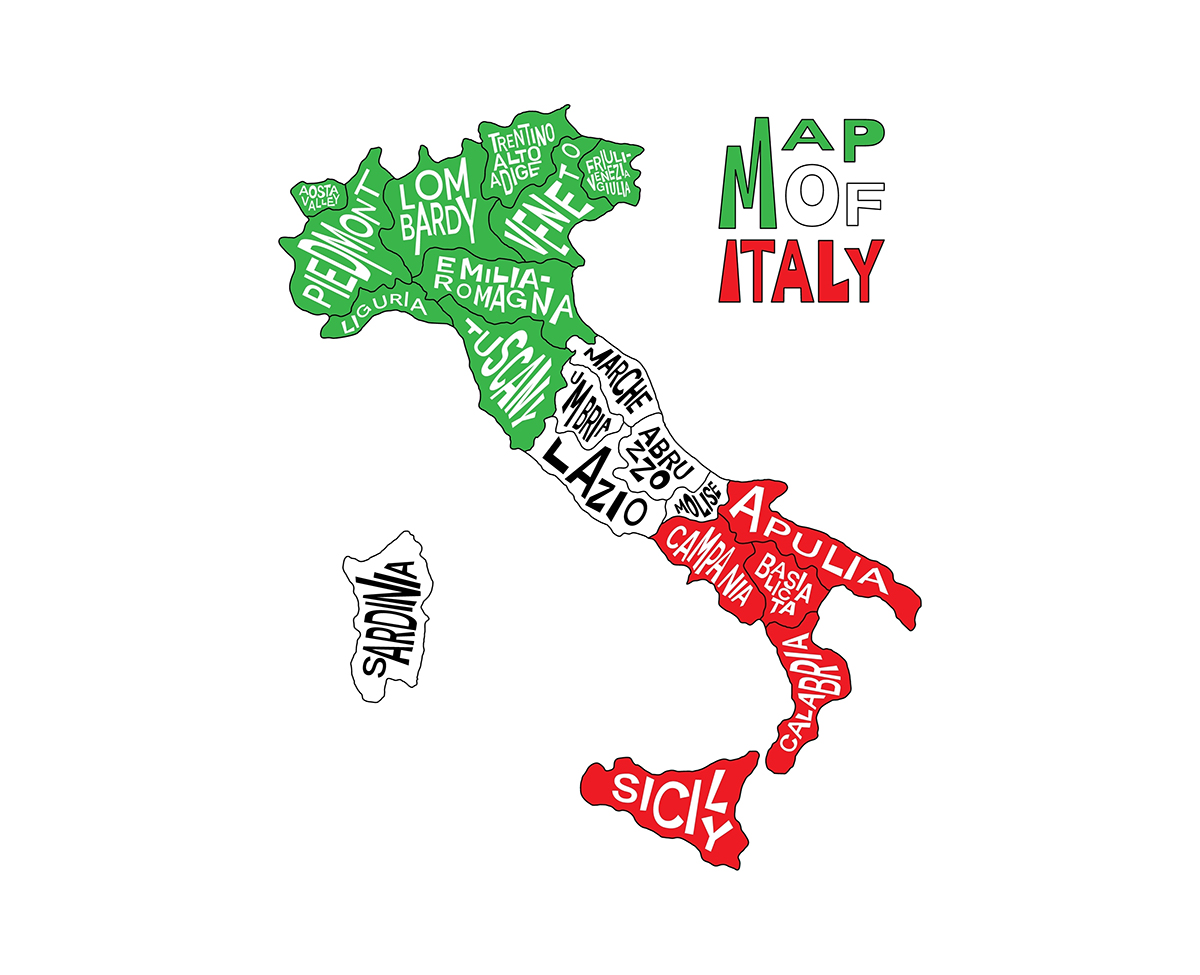Italy has been THE absolute attraction for tourists when it comes to holidays since the 1950s at the latest. Germans in particular love their holiday destination – after all, it can be reached directly by car. Italy has beautiful beaches and is densely populated by sun-seekers and water sports enthusiasts in the summer months. In winter, you can ski in Italy and explore the country’s magnificent ski resorts on the snow-covered slopes.
Italy is famous above all for its unique cities and tourists from all over the world visit well-known metropolises such as the capital Rome, the water city of Venice or Florence, the hometown of the Medici. Hardly any other country has such a density of interesting cities to offer, which are full of beautiful buildings and peppered with great history. You are almost overwhelmed when you follow in the footsteps of long-gone times of the Romans in Rome or explore the historical sights in Florence .
The cuisine of Italy should also be tasted extensively, because the Italian dishes are full of epicurean delicacies. The countless wine-growing regions of Italy complete the offer absolutely perfectly.
But not all Italy is the same, because the country in southern Europe, shaped like a boot, has no less than 20 regions to offer, all of which you should actually have visited at least once, because they are as charming as they are different and all have an enormous amount to offer.
Abruzzo (Italian. Abruzzo) – Mountains meet Adriatic coast
The region is rather sparsely populated with just 1.3 million inhabitants. Abruzzo is located in the east of the country directly on the Adriatic coast and has long beaches. In addition, it is home to the highest mountain in Italy – which does not belong to the Alps. The Corno Grande is almost 3,000 m high and rises in the middle of the Gran Sasso d’Italia massif in the Apennine mountain range. Abruzzo has the highest density of nature reserves – after all, a third of the region is under nature conservation. Tourists mainly visit the numerous castles and palaces. L’Aquila is the capital of Abruzzo and has various historic buildings from the Baroque and Renaissance periods. The mountains are good for hiking in summer, and varied skiing in winter. Abruzzo has so far been considered an insider tip by tourists.
Aosta Valley (Italian. Valle d’Aosta) – home of Mont Blanc
Valle d’Aosta is the smallest region in Italy. It is located in the northwest of the country and belongs to the Alps. This is also where Mont Blanc is located, the highest mountain in the Alps at 4,810 m. The region borders directly on Switzerland and France in the border triangle. The official language is therefore French in addition to Italian. There are several ski resorts in Valle d’Aosta, the most famous being the town of Courmayeur. This is also where the famous Mont Blanc tunnel begins. Above all, fans of alpine pleasures such as hiking, mountain biking and, of course, skiing and snowboarding regularly come here.
Apulia (Italian. Puglia) – on the heel of the boot
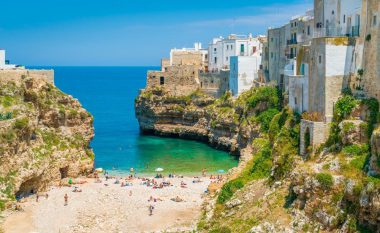
Puglia is located in the very south of the country and, together with the Salento peninsula, forms the heel of Lo Stivale, the boot shape of Italy. The region has just over four million inhabitants. The capital is Bari, a well-known university and port city. Puglia is located on both the Adriatic and Ionian Seas and has long beaches to offer. In addition to Bari, the city of Brindisi is also known and is often visited by tourists. Puglia is home to the famous Castel del Monte Castle, built in 1250. But Puglia is best known for its good red wines such as Primitivo.
Basilicata (Italian. Basilicata) – wild and untouched
The sparsely populated region is located in the south of the country on the Apennine Peninsula. Basilicata has just under 600,000 inhabitants and the capital is Potenza. The region is located directly on the Tyrrhenian and Ionian Seas. Especially the sandy beaches at Metapont and Policora invite you to sunbathe. The city of Matera, with its Sassi cave settlements, is a UNESCO World Heritage Site. Worth seeing are the Roman Catholic Abbey of Santissima Trinità di Venosa and the Cathedral of Acerenza from the 11th century. The landscape of Basilicata is wild and unspoiled and can be explored in the Pollino and Murgia Materana National Parks.
Emilia-Romagna – large metropolises galore
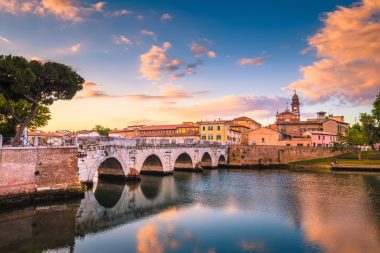
The Emilia-Romagna region has about 4.3 million inhabitants and is located in northern Italy. Emilia-Romagna is home to a large number of well-known Italian metropolises. These include Parma, Modena, Ravenna, the well-known seaside resort of Rimini, Forlì and the capital of the Bologna region. Bologna is the oldest university city in Italy and has many attractions such as Piazza Maggiora and the Basilica of San Petronio. In Bologna, fans of motorsport can visit the factories of Ferrari, Maserati and Lamborghini. Emilia-Romagna is home to the popular Imola circuit. Famous delicacies such as the ever-popular spaghetti bolognese and the delicious mortadella come from this region.
Friuli-Venezia Giulia (Italian: Friuli-Venezia Giulia) Friuli-Venezia Giulia) – Northern Italy’s pearls do the honours
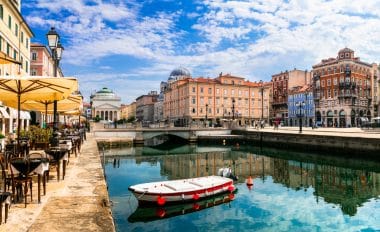
Friuli Venezia Giulia is located at the outermost tip in the northeast of Italy and is rather small with about 1.2 million inhabitants. Friuli-Venezia Giulia borders Austria as well as Slovenia, the capital is the well-known port city of Trieste. In the famous university and port city you will find countless beautiful buildings such as the Castello di Miramare Castle. Other well-known cities in the region are Udine with its famous cathedral Santa Maria Annunziata and Pordenone with picturesque palaces of the patricians. In Friuli-Venezia Giulia Veneto is the Monte Coglians, at 2,780 m the highest mountain in the region.
Calabria (Italian. Calabria) – the tip of the boot
The region is rather sparsely populated. Calabria is dominated by a mountainous landscape and is almost entirely criss-crossed by mountain ranges. The highest mountain at 2,260 m is the Serra Dolcedorme. The region is located on both the Ionian and Tyrrhenian Seas and has a coastline of 700 kilometers. In addition to the capital Catanzaro with the Cattedrale Metropolitana di Santa Maria Assunta, there are other buildings worth seeing in Reggio Calabria, Stilo and Rossano. The ancient excavation sites in Sybaris and Lokroi invite you to visit. Calabria is also notorious for one of the most powerful mafia organizations, because it is home to the ‘Ndrangheta.
Campania (Italian. Campania) – Vesuvius and Pompeii invite you to explore
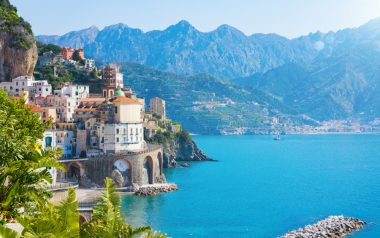
Campania is located on the west coast of Italy and is the most densely populated Italian region, with a population of about 5.8 million. Especially the well-known capital Naples is an attraction for tourists every year. In addition to the Neapolitan sights, the volcano Vesuvius, not far from Naples, and the famous archaeological site of Pompeii are an absolute must for every visitor to this region. The enchanting Amalfi Coast and the pretty islands of Ischia and Capri with the Blue Grotto invite you to linger. In addition to a relaxing beach holiday, tourists also prefer extensive hikes in the mountains and exploration tours through the nature parks. In addition to spaghetti Napoli, the region is also famous for its pizza – it is said that the first pizza ever was baked here.
Lazio (Italian. Lazio) – with the Eternal City of Rome
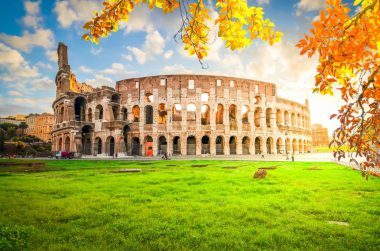
Lazio is, so to speak, the navel of Italy, because here lies the city of Rome, its capital, world metropolis and place of a lot of history of the ancient Romans. In the middle of it all is Vatican City, seat of the Catholic Church with its head, the Pope. Every year, countless tourists come to Rome to marvel at the many sights such as St. Peter’s Basilica, Spanish Steps, Colosseum & Co. The Lazio region is located on the west coast of Italy and is located on the Tyrrhenian Sea. Civitavecchia is the port city not far from Rome, where numerous cruise ships dock every year to visit the city of Rome. Next to the city of Rome, Lazio captivates with its beautiful landscape, peppered with vineyards and volcanic lakes. Various mountains, such as the almost 2,500 m high Monte Gorzano, invite you to go hiking and mountain biking. Impressive historical buildings such as the Castle of the Farnese in Caprarola and Castel Gandolfo offer a perfect insight into times long past.
Liguria (Italian. Liguria) – on the trail of the Genoese naval power
The Liguria region is located directly on the Ligurian Sea and the Mediterranean Sea. Especially the famous capital Genoa is an attraction for tourists from all over the world every year. Here you can admire the beautiful harbor and the countless sights such as the Palazzo Ducale and the Basilica of Santa Maria Assunta. In addition, Liguria is known for its cities of Alassio, Savona, Sanremo, La Spazia and its noble town of Portofino. Liguria is located in the northwest of Italy and borders France. The long beaches are very popular during the summer months. The region is home to several regional parks, nature reserves and the Cinque Terre National Park, all of which are protected.
Lombardy (Italian: Lombardy) Lombardia) – World-class fashion in Milan
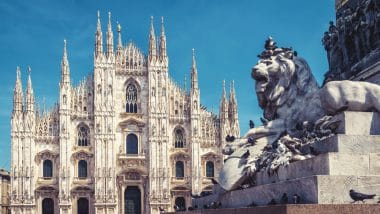
The region is located in northern Italy and borders Switzerland . With around 10 million inhabitants, it is the most populous region in Italy and you will find beautiful metropolises such as Milan, Bergamo, Mantua, Pavia and Brescia. The popular Lake Como as well as parts of Lake Maggiore and Lake Garda are also part of Lombardy. The landscape of the region is very multifaceted. The almost 4,000 m high mountain Piz Zupò is just as much a part of Lombardy as parts of the Alps and the Po Valley. The countless tourists make a pilgrimage every year, especially to the popular large lakes with all their opportunities such as swimming, hiking and cycling. No less popular are city tours to Milan, where you can visit the Milan Cathedral or explore the fashion houses with world-class fame.
Marches (Italian. Marche) – between water sports and pilgrimage
The Marche region is located between the Adriatic Sea and the Apennines. It is located on the east coast and the capital is Ancona. Tourists appreciate this region for its beautiful seaside resorts such as Portonovo or Sirolo. Water sports enthusiasts in particular get their money’s worth here. But the hilly landscape and the adjacent mountains of the Apennines also provide a wide variety of activities. In addition to the capital Ancona, the towns of Pesaro, Fano and Urbino are ideal for exploring. And last but not least, the pilgrimage site of Loreto is an important place for Catholics and attracts countless pilgrims every year.
Molise – unspoilt landscape with suggestive villages
Molise is the second smallest region in Italy after Aosta Valley and has just over 300,000 inhabitants. It is located directly on the Adriatic Sea in the east of the country and its capital is Campobasso. Molise is divided into Basso Molise with picturesque hilly landscape and Alto Molise with high mountains and small villages. Nature is often still practically untouched and thus has its very special charm. In the region, which has so far been spared from mass tourism, you can explore pretty villages, vineyards and scenically impressive areas. In the capital Campobasso you can visit the Castello Manforte, in Termoli the Romanesque cathedral and in Sepino an excavation site of the ancient Romans.
Piedmont (Italian: Piedmont) Piemonte) – Turin, Truffles & Barolo
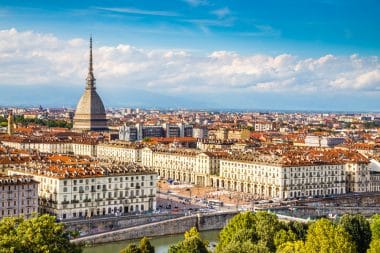
In terms of area, this region is the second largest in Italy. It is located in the north of the country and borders Switzerland and France. The capital of Piedmont is the well-known city of Turin, other well-known cities are Asti, Novara and Alessandria. Turin stands out above all for the Palazzo Reale, the residence of the Savoy royal family, which is also part of the UNESCO World Heritage Site, as well as the Turin Cathedral and the Castello del Valentino. Piedmont is considered an insider tip for tourists, because here you will still look in vain for mass tourism. In Piedmont you can go hiking in the mountains and ski in winter. Famous winter sports resorts are Sestriere, Alagna Valsesia and Bardonecchia. The highest mountain in Piedmont is the Monte Rosa massif, which is about 4,600 m high. Tourists also appreciate the region for its epicurean delights such as Barolo red wine and delicious truffle dishes.
Sardinia (Italian: Sardinia) Sardegna) – Holiday island par excellence
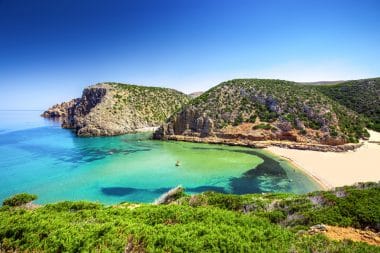
The island of Sardinia is a separate region of Italy. It is located in the Mediterranean Sea and is the second largest island after Sicily. There are about 1.6 million inhabitants living in Sardinia, the capital is Cagliari. The island is extremely popular with tourists, because it has a lot to offer and presents itself very varied. Pretty places such as Porto Cervo, Palau, Alghero or Cannigione invite you to linger. There are plenty of water sports such as diving, windsurfing and sailing, and the beautiful beaches attract countless visitors. Ancient villages such as Castelsardo and Bosa bear witness to the island’s earlier times and should definitely be explored.
Sicily (Italian. Sicilia) – Etna volcano in all its splendor
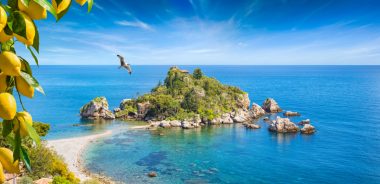
Sicily is the largest island in the Mediterranean and has just over 5 million inhabitants. The still active volcano Etna is about 3,300 m high, the volcano Stromboli is considered the most active volcano in the world. Sicily impresses above all with its wild, unspoilt landscape. The island is best explored by trekking through the mountains or by taking a beautiful boat tour along the coast. Miles of sandy beaches invite you to sunbathe and swim. If you prefer sightseeing, Sicily is home to ancient Greek temples, the archaeological site of Doric temples of Agrigento, a UNESCO World Heritage Site, and the impressive Scala di Turchi. Especially the capital Palermo, but also Messina, Syracuse, Catania and Taormina are also worth a visit.
Tuscany (Italian: Tuscany) Toscana) – simply fantastically beautiful
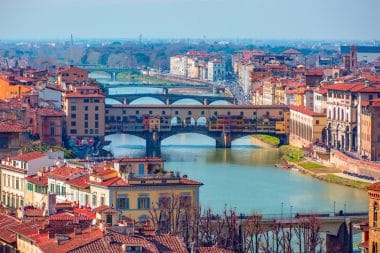
Once you’ve been to Tuscany , you can’t decide what’s more beautiful – the enchanting landscape or the countless beautiful cities of this region. The historic landscape presents itself with graceful hills dotted with magnificent pines, columnar cypresses and olive trees. The vineyards produce plenty of delicious wines. Florence as the capital of Tuscany is hard to beat in terms of historical buildings, after all, the famous Medici dynasty has left its mark here. Other cities include Lucca, Pisa with its famous leaning tower, Siena and Livorno. The island of Elba also belongs to Tuscany.
Trentino-Alto Adige (Italian: Trentino-Alto Adige) Trentino-Alto Adige) – paradise for skiers
The region is located in the very north of Italy in the border triangle with Austria and Switzerland. Trentino-Alto Adige is dominated by the Alps and the mountain range of the Italian Dolomites. Many winter sports enthusiasts come to South Tyrol every year to ski or snowboard extensively. The highest mountain in the region is the Ortler at just over 3,900 m. In summer, enthusiastic hikers enjoy the impressive mountain landscape and the good mountain air. Trento is the capital. Places such as Merano, Bressanone and Bolzano invite you to visit with their historic buildings. The Trauttmansdorff Castle of Empress Sissi is just as worth a visit as the medieval alleys in Sterzing, the city of the Fuggers.
Umbria (Italian. Umbria) – in the footsteps of Francis of Assisi
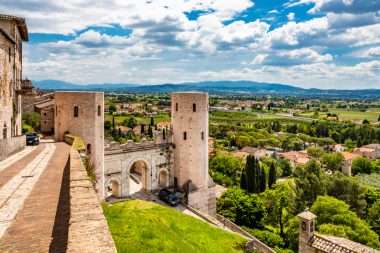
Due to its narrow boot-like shape, almost every region of Italy has a stretch of coast. Umbria is the only exception. The region is located in the center of Italy and has almost 900,000 inhabitants. The capital is Perugia, other beautiful places are Città di Castello, Assisi and Orvieto. In Perugia you can visit the medieval old town. The town of Assisi is a UNESCO World Heritage Site. Holidaymakers appreciate Umbria above all for its varied landscape with many opportunities for trekking, mountain biking and hiking. The Valneria Natural Park impresses above all with its many waterfalls. Adrenaline junkies will enjoy kayaking and rafting on the Nera River. Umbria has many epicurean delicacies to offer. This includes delicious wines and cheese specialties.
Veneto (Italian. Veneto) – Venice as the crowning glory of Italy included
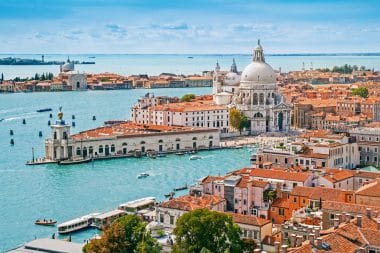
As we all know, the best comes at the end. And for many Italy fans, this is undisputedly the water city of Venice – after all, it is absolutely unique in the world with its special waterways without any access for cars. The historic city is a must-see with its famous buildings of ancient naval power such as the Doge’s Palace, the impressive St. Mark’s Basilica and the Rialto Bridge. The Veneto region also includes the beautiful cities of Verona with its famous Arena, Padua, Vicenza and Treviso. The Veneto region has much more to offer than its well-known cities. The region stretches from the Dolomites to the Po Valley, parts of Lake Garda are just as much a part of Veneto as the lagoons on the Adriatic coast.


